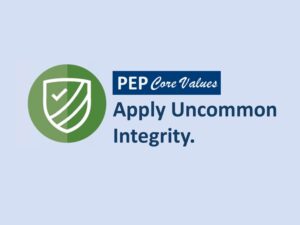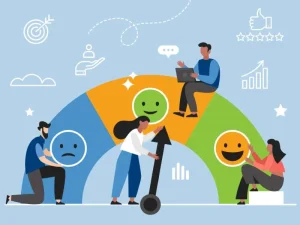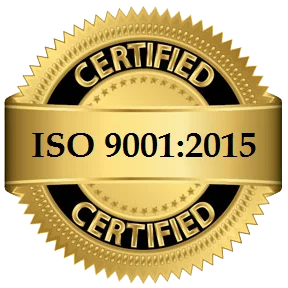
When I first started Performance Excellence Partners (PEP) 22 years ago to provide federal contracting services and business consulting, most corporate professionals were commuting to central offices to work side by side. PEP’s “place of business” was an intangible expanse connected by phone and internet.
Having a remote workforce in different time zones enabled me to fully support my clients in Washington, D.C., and around the country while also keeping my family’s hometown roots intact. It provided a solution to a challenge typically encountered by women entrepreneurs: meeting the needs of both business and family. It also allowed me to provide for others what I had been craving in my own work life as a working mom. I could now be that forward-thinking business owner leading an innovative organization and offering a more flexible work environment to a diverse and non-traditional staff.
All good. I just had to figure out how to make it work. There wasn’t much of a blueprint at the time. But with the help of an outstanding corporate team who shared my vision, our way of working became second nature.
As we felt the need for a formal office, and we retained one for nearly a decade. While this had its benefits – a central location for files, a regular routine for corporate staff – we found that people still ended up telecommuting a good deal of the time. So, when COVID made remote work a necessity, the office seemed superfluous, and it was a natural transition to let it go. Yet, we still wanted a home base.
In another nontraditional step we created our own “we-work” space at the ocean-front Pacific City mall in Huntington Beach, CA. Our bright and beautiful spot is there when we need it: for meeting in person, collaborating, or for an occasional change of venue. It also doubles as an art gallery and can be used in off hours for small public events, which completely aligns with my community-centric leanings.
It’s been an interesting trajectory. We started as a completely virtual company before there was a term for it. We later adopted part of the traditional model, using an office space for corporate staff and managing our projects remotely. And most recently, we’ve returned to virtual with a hybrid space as a “landing pad.”
Now that the rest of the world has jumped into the telecommuting pool with me – or has been thrown in! – I thought I’d share a few things I learned about building a collaborative work environment with a staff that rarely shares the same physical space.
Stay Connected
No matter how diligent your employees may be, keeping in close contact is crucial. Bi-monthly check-in calls for our corporate team, quarterly all-staff virtual meetups, and regular meetings for subgroups and project teams keep us all in touch and on task.
How We Do It
- We used phone conference calls when they were our only option.
- Video conferencing (WebEx), and more recently, the newer virtual meeting platforms (Teams, Zoom), were a great improvement. Besides allowing us to share documents and visuals and collaborate in real time, these tools offer a simulation of lunchroom and watercooler camaraderie – an aspect of in-person work that many people miss.
- We offer employees opportunities to connect more informally, and we share employee profiles to help our team members learn more about their interesting mix of co-workers. Initially we used a private LinkedIn staff group. We are currently transitioning to BambooHR.
Add Value to Meetings
Even in-person meetings can elicit an eyeroll from anyone who has sat through enough of them. On-screen meetings have their own perils. We make our staff meetings intentional and not just a must do.
How We Do It
- Whether we’re collaborating, assigning tasks, or reporting back on project work, we make sure everyone’s time is spent productively. Each meeting has a clear purpose, a useful takeaway, and definitive action items.
- I enjoy having fun with our quarterly all-staff meetings, complete with ice breakers and giveaways. They allow us to take a collective break and share a few laughs. During the COVID lockdown, these virtual meetups gave us all a much-needed lift. They also let staff know they have our support, and they build a closer-knit team of workers who are committed to doing their best for each other.
Over-communicate
These days, we all receive an enormous amount of information from different sources and through an assortment of channels. Even in traditional office settings, it’s easy for messages and important information to get lost, ignored, forgotten, or misinterpreted. Promoting clearly defined and consistent communications habits helps to break through the clutter and avoid confusion.
How We Do It
- We use email best practices: use a single subject per email; be clear on who is addressed and who is copied just “FYI”; state any request up front; be clear and concise; and, when responding, read the initial email carefully, and be sure to address all requests.
- We share the reasoning behind our requests to provide context and maximize collaboration.
- We encourage team members to reach out to each other between standing meetings and ask for clarification, as needed, so things get done right the first time.
- We use calendar invites for meeting announcements, so notifications show up on our screens and the information goes right into our calendars. And, of course, we send reminders!
Create a Corporate Culture
Creating a corporate culture helped make us more cohesive. Documenting the values on which I founded PEP and sharing them with our entire team connected us in our work ethic and gave us common goals and standards. It also clarified what we were about as a company and how we would strive to exceed our clients’ expectations.
How We Did It
- I downloaded my thoughts to my corporate team, and we deliberated over how to articulate our core values.
- We created a handout to communicate these values to our full staff and held a special meeting to explain and discuss them.
- At our all-staff meetings, we talk about how we are putting our values into practice, and we use them in our hiring process to ensure that candidates are a good fit for PEP.
Keep the Big Picture in Mind
Keeping the back end of your business humming is especially crucial for companies with remote employees: focusing on your business goals, targeting the right sales leads, attracting the best talent, keeping your core values in sight.
How We Did It
- We hired a consultant! (Yes, even business consultants can use some advice now and then.) Ours helped us see more clearly what we already knew and helped us visualize what we were thinking.
- We also found strategic planning guidance in Gino Wickman’s book Traction: Get a Grip on Your Business. Its straightforward and streamlined strategic planning process and Entrepreneurial Operating System (EOS) helped us take the time to step outside our day-to-day operations and chip away at our long-term goals.
Watch for my next remote work blog, in which I’ll share more of the specific tools and practices we use to keep ourselves organized.
About the Author: Rachel E. Ramirez, CEO and President of Performance Excellence Partners (PEP), is a proven leader and successful entrepreneur with extensive public and private sector experience who started her career in workforce development which cultivated her interest in helping people create careers. Under Rachel’s guidance, PEP grew from a one-person operation to a high-performing business with multiple prime contracts. Her focus now is on maximizing PEP’s contract vehicles, cultivating relationships with clients/partners, and ensuring exceptional service delivery. Her ability to instill a commitment to excellence in her team is evidenced by PEP’s client awards and consistently high evaluation scores. Rachel has a master’s degree in Industrial/Organizational Psychology and is a Workforce Excellence Baldrige Examiner.
To Learn More about PEP’s expertise in organizational management: please visit our business operations support page or contact us. To be the first to receive our next blog post, please join our mailing list. You can download a copy of PDF here.





